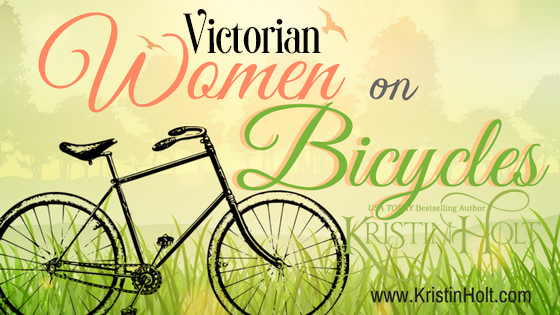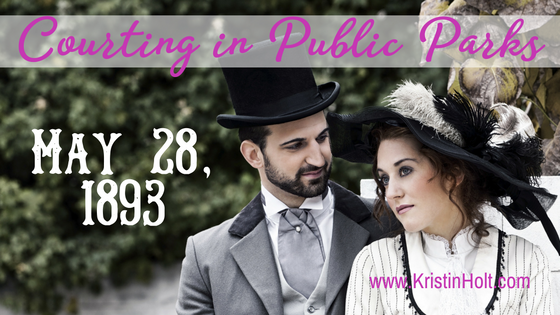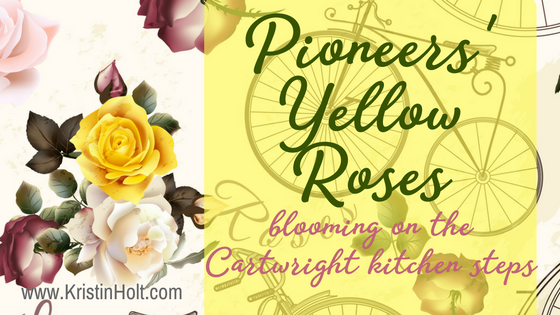
by Kristin Holt | Mar 9, 2017 | Articles
Etiquette governing balls and dances in the American Victorian era seems stuffy, old-fashioned, and strict to 21st century Americans. Every rule of decorum ensured good manners were in play, but most importantly, the moral purity and innocence of young women and young men were maintained. Etiquette governed everything from how a man asked a woman for a dance to how he could properly hold her hand while dancing, to how many dances that pair could have in one evening. This article contains the specifics propriety demanded, and the vintage sources where they may be found. Leap year turned some of the lady’s restrictions upon the men; see the true-to-history newspaper article from 1888 that starred in Sophia’s Leap-Year Courtship.

by Kristin Holt | Feb 18, 2017 | Articles
Though American Victorian women took to the safety bicycle in droves, newspaper and public notices of the day show that women on bicycles were not widely accepted. A public service announcement from The Woman’s Rescue League proclaimed that women on bicycles were immoral, vulgar, disease-ridden, and unwomanly. Such attitudes didn’t keep women from their bicycles, and with the advent of the new Safety Bicycle, women such as my character, Sophia Sorensen (Sophia’s Leap-Year Courtship), took to cycling and had no interest in forfeiting the exercise and transportation.

by Kristin Holt | Dec 26, 2016 | Articles
This article contains the transcription of a brief recounting of one five-year-old boy’s letter to Santa Claus, published in Chicago Daily Tribune on December 26, 1883. The vintage newspaper report sheds light upon the attitudes and perceptions of our late Victorian-era ancestors, a young and well-to-do boy’s Christmas wish-list, and how his parents must have attempted to impress upon him an awareness of the good he might do for others. I find it interesting that residents of the Old Ladies’ Home are referred to as “inmates”.

by Kristin Holt | Nov 22, 2016 | Articles
In 1893, expectations surrounding courtship made it improper for a couple to show affection for one another in public. Baltimore apparently outlawed simple signs of affection in their city parks, raising the alarm in New York City where Central Park was a key location for courting couples to go about their courtship (which included simple things like sitting on a bench together, a man’s arm about his sweetheart’s waist). This article includes a newspaperman’s interview with two different Central Park policemen, one who favored strict laws prohibiting such displays of affection and one who was most tolerant. Step back in time and enjoy an entire vintage newspaper article and historic images of Central Park in the late 19th century.

by Kristin Holt | Nov 7, 2016 | Articles
Yellow roses appear briefly in three scenes within COURTING MISS CARTWRIGHT. Yellow roses, particularly Harison’s Yellow, are found strewn along the Oregon trail, blooming feral alongside abandoned ruins of cabins and clapboard houses in ghost towns, and originated in 1824 New York. This article contains the ‘Cemetery Scene’ where Felicity, new to Mountain Home and seeking answers. visits the cemetery and first notices the yellow roses on her father’s grave. This scene is the first conversation between sisters who’ve not known about each other until their father’s will brought them together the evening before–and they’d been barely civil.













